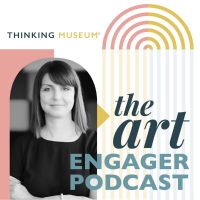Episode 85
6 benefits of using thinking routines with art and objects
I know thinking routines are a huge crowd pleaser.
I’m their biggest fan too - they have fundamentally changed the way I lead discussions around art and objects.
Used in combination with the other 7 practices of the VTM approach such as good questions, a range of facilitation skills, slow looking and more, you can create wonderfully engaging discussions in the museum about art and objects.
Used as part of a holistic approach, thinking routines will transform the way you work with objects and with audiences in the museum.
Thinking routines have wonderful benefits for the participants in your guided tours and educational programmes.
But I also believe thinking routines are incredibly useful and beneficial tools for you too - as a museum educator, guide, docent or teacher.
And so today I’m going to focus on you - and I’m going to share some 6 key benefits you’ll get from working with these magical structures with art and objects.
I going to talk about why routines are beneficial, the importance of structure, the flexibility of routines, how they help you to master sharing information and improve your questioning technique. And finally I’m ending with probably the biggest benefit of all - so stay tuned for that one!
Links
Download The Ultimate Thinking Routine List
Join the Slow Looking Club Community on Facebook
Download my free guide - how to look at art (slowly)
Curated newsletter by Claire Bown
Episode 3 - The Magic of Thinking Routines
Episode 62 - 7 Ways to be creative with thinking routines
Episode 12 - 6 Best Practices for Sharing Information
Episode 36 - Quick Ways to Improve your Questioning Technique


